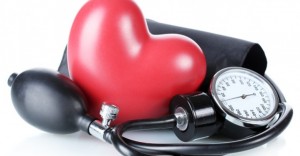I remember when I first got pregnant and all antenatal visits were inclusive of a blood pressure check. I’d just sit there while the nurse did her thing, and when she was done, I’d glance at the meaningless numbers on the screen and casually get up. As long as I didn’t see a look of worry on her face, I assumed I was fine.
A lot of people are like me. As long as you don’t consider yourself at risk for a particular disease, you almost certainly won’t pay much mind to learning about the disease and how to prevent it. High blood pressure is one of such diseases. The common myth is usually that people suffering from depression or those who think too much are the most at risk of getting high blood pressure. This is far from the truth. Scientifically, anyone is at risk of developing high blood pressure. Even if no one has ever had the disease in your family, all that is needed is a few lifestyle habits to put you at risk.
What Is Blood Pressure?
Blood pressure is measured in two forms: the systolic and the diastolic blood pressure. Systolic blood pressure is the pressure created on the arteries when blood is pumped to it from the heart, while diastolic blood pressure is the pressure on the arteries when the heart rests. If you’ve ever had your blood pressure measured, you must have seen figures like 110/75, for example. 110 is the systolic blood pressure, while 75 is the diastolic blood pressure.
A normal systolic blood pressure is below 120; figures between 120-139 is an indication of pre-hypertension, while anything 140 and above is hypertension or high blood pressure.
For diastolic blood pressure, 80 is the normal range. 80-89 signals pre-hypertension, while 90 and above is an indication of high blood pressure. So next time when you get your blood pressure checked, you should certainly have an idea of what the figures mean for your health.
Blood pressure is usually measured using a Sphygmomanometer (Sphyg), which is an instrument that consists of a pressure gauge attached to a cuff and a small monitor. The cuff is wrapped around the upper arm and inflated with pressure from the gauge. The health worker listens through a stethoscope, and determines the accurate blood pressure.
How High Blood Pressure Occurs
High blood pressure, or hypertension, occurs when the heart works extra hard to pump blood into the arteries that carry blood all over the body. According to WebMD, the harder the arteries work, the higher the chances of a person developing high blood pressure. A lot of things can predispose one to high blood pressure, and they include:
- Too much salt intake
- Sedentary lifestyle
- Smoking
- Obesity
- Excessive alcohol consumption
- Old age
- Genetics
- Family history of high blood pressure
- Chronic kidney disease
From the above, we can see that high blood pressure is caused by lifestyle choices as much as it is caused by other external factors.
Benefits Of Checking Your Blood Pressure Regularly
Even though it may be something we overlook frequently, checking your blood pressure at intervals assist in detecting any abnormalities before they become life threatening. Regularly checking your blood pressure guards against hypertension, high blood pressure and heart disease.
On the flip side, late diagnosis of high blood pressure could lead to heart attack, stroke, or kidney damage.
For someone with normal blood pressure, it is medically advised to check your blood pressure at least every two years. People with already diagnosed high blood pressure on the other hand, should always consult with their doctors to help manage the condition.
About the author: Amina Salau is a writer and editor running The Illuminated Pen. You can find her online at www.theilluminatedpen.com and on Twitter (@_Aminah)



